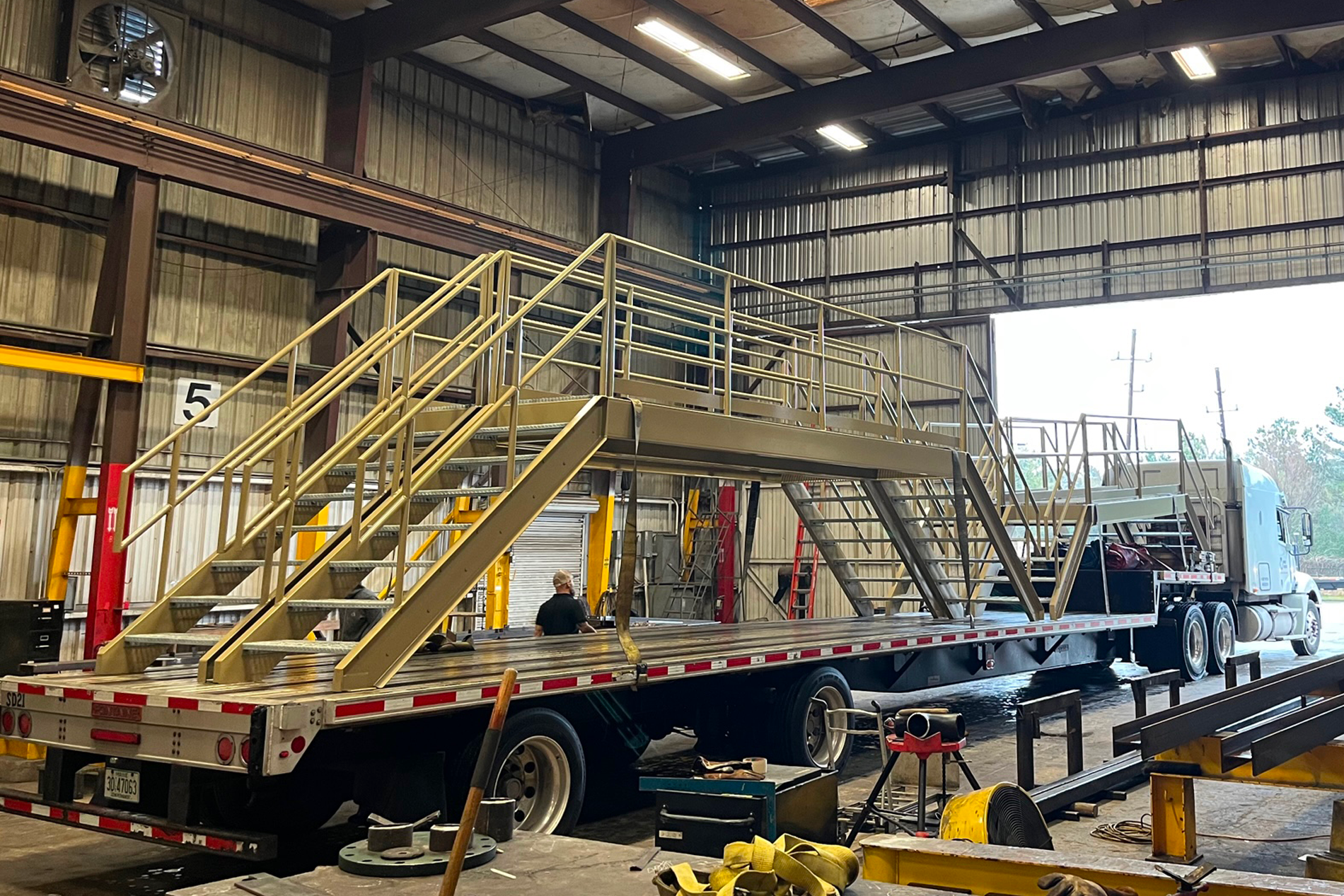Structural Fabrication, Platform, Stairways & crossovers

Service Overview
Platform Stairway and Catwalk fabrication involves the engineering, construction, and installation of elevated walkways or platforms used for access, maintenance, and inspection in various industrial settings. These crossovers are commonly found in industries such as oil and gas, petrochemical, manufacturing, and construction. They provide safe pathways for workers to access equipment, machinery, or structures located at heights or in confined spaces.
Platforms, stairways, and crossovers fabrication requires expertise in structural engineering, welding, fabrication techniques, and safety regulations. Fabrication companies must adhere to industry standards and regulatory requirements to ensure the reliability and safety of these elevated structures in industrial environments.
overview of the fabrication process for structural fabrication, platforms, stairways, and crossovers
The fabrication process begins with the engineering phase, where engineers create detailed drawings and specifications for the platforms, stairways, and crossovers based on the specific requirements of the facility. This phase takes into account factors such as layout, dimensions, load capacity, safety regulations, and accessibility standards.
Once the engineering is finalized, appropriate materials are selected based on factors such as strength, corrosion resistance, and durability. Common materials used in the fabrication of platforms, stairways, and crossovers include carbon steel, stainless steel, aluminum, and fiberglass-reinforced plastic (FRP). The materials must meet relevant industry standards and regulatory requirements.
Platforms, stairways, and crossovers are fabricated using various manufacturing processes, depending on the materials and the complexity of the structures. These processes may include:
- Cutting: Material sheets, plates, or sections are cut to size using methods such as shearing, sawing, or plasma cutting.
- Welding: Various welding techniques such as MIG welding, TIG welding, or stick welding are used to join the structural components together.
- Forming: Bending, folding, or rolling metal sheets or sections to create the desired shapes and profiles for platforms, stairways, and crossovers.
- Machining: CNC machining may be used to create precision features, holes, or cutouts in the components.
- Assembly: Once the individual components are fabricated, they are assembled into the final structures using fasteners, welding, or other joining methods.
After fabrication, the platforms, stairways, and crossovers may undergo surface preparation and coating to protect them from corrosion and environmental damage. This may involve abrasive blasting to remove scale and rust, followed by the application of protective coatings such as paint, powder coating, or hot-dip galvanizing.
Throughout the fabrication process, quality control measures are implemented to ensure that the structures meet specified tolerances, dimensional accuracy, and weld quality standards. Inspections may be conducted at various stages of fabrication, and non-destructive testing (NDT) methods such as visual inspection, ultrasonic testing, or dye penetrant testing may be used to detect any defects or imperfections.
Once fabrication is complete, the platforms, stairways, and crossovers are transported to the installation site and assembled according to the engineering drawings and specifications. Proper installation procedures are followed to ensure stability, alignment, and safety of the structures.
